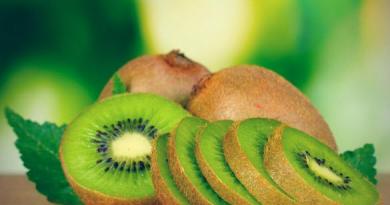How to grow sweet potatoes in the country
New times can be praised, you can scold. But objectively, we have more opportunities. Even in such a conservative business as gardening. If 50 years ago you read, for example, in some book that a certain don ate a baked sweet potato - yawned and forgot, then now, with minimal preliminary effort, you can order a baked sweet potato for your wife for lunch. And not bought in a store, but grown in your own country house.
What is sweet potato
In the tropics and subtropics, it has been known for more than a thousand years, and reproduction by tubers has become so common that they have already forgotten about the seeds (similar to our potatoes). And like potatoes, sweet potatoes have dozens of varieties, a variety of flavors and tuber colors. The tubers have a lot of glucose, and most varieties are sweet.
You will be surprised, but the closest relative of sweet potato is bindweed (morning glory) outwardly, both in leaves and in flowers, even a specialist will not always distinguish.
I do not pretend to be the laurels of a great naturalist, but nevertheless, at one time I graduated from the Department of Botany of the Leningrad State University. When I first saw sweet potato with friends in the country, I didn’t recognize it: bindweed bindweed, flowers like gramophones, only strangely planted – crawling along low arcs above the garden.
His story is interesting because, by origin, South American, he somehow got to Africa in the pre-Columbian era and assimilated there so firmly that some consider his homeland the Black Continent.
At home, sweet potato is a perennial liana. Quite long, up to 5 m. It can climb the supports, but prefers to crawl and put out additional roots. Valuable (especially for lazy gardeners) because it practically does not need watering - unless you have rain once a month.
Places require the most sunny, from the soil - sandy loam and light loose loam. Does not tolerate close standing groundwater. In general, sweet potato is not difficult to grow in the North-West of Russia, not to mention its southern regions.
My friend brought two tubers from Spain 12 years ago (he thought about the legality of moving such objects across the border much later, when he was sorting out his suitcase at home. Customs either did not notice them, or ignored them. He did not even think about it. Actually, then you can't).
Since then, he has been growing sweet potatoes in his dacha near Luga. Not as an alternative to potatoes, but rather as an exotic and a source of usefulness: sweet potato is rich in them, but this is a separate issue. And most importantly, the tubers are stored without problems: just in a box at a temperature of about 17 ° C in the pantry.
Planting sweet potato
Around mid-February, sweet potato tubers are placed in a tray with wet peat, so that, lying on their side, they are half immersed in peat. After ten days, sprouts begin to appear (the tubers do not have visible eyes, and the sprout climbs, as it were, from an empty place). When the sprouts reach about 7 eat. they are rooted in cups with a peat-sand mixture, 1: 1. They take root quickly and willingly (in a day), especially if they are not cut off, but carefully plucked under the base, dried for 15 minutes and stuck into a glass with the mixture.
And cover all charged cups for several days with a transparent bag. Rooted cuttings do not get sick with anything (just make sure that there is no spider mite), and with normal care in a warm and bright (additional light is desirable at the beginning) place, they grow to about 70 cm by mid-May.
They are planted in ridges 60-80 cm wide and of arbitrary length, seasoned with complete mineral fertilizer, and covered with a film (film tunnel) until mid-June.
Plants, growing, cover the entire soil of the ridge so that there are no problems with weeds.
Yam: care
It is enough to water once every 10 days, combining it with top dressing with fermented grass, or you can not water it at all if there is enough rain, and simply scatter dry phosphorus-potassium fertilizer in July over the surface of the ridge and, if possible (if you push through the tops), close up in soil.
In the 20th of August, the tops of all lashes must be pinched, this will help increase the size of the tubers. And in mid-September comes the harvest.
Ten kilogram tubers, as in the tropics, you are unlikely to dig up, but weighing 200-400 g and up to 1 kg - quite (for the Leningrad region, to the south - larger).
You can eat it raw (similar to a carrot) and heat-treated in all ways. Actually delicious, worth a try!
vsaduidoma.com
Sweet potato: cultivation in central Russia
Many have heard of sweet potato, but few have seen it. Have tried even fewer. But you can cook very tasty dishes from sweet potato. But where to get it? In big cities, sweet potato is sold in supermarkets. But not everyone lives there. Yes, and the price of it "bites". Is it possible to grow sweet potatoes in the middle lane? After all, the climate there bears little resemblance to the weather conditions of Colombia and Peru, where this plant comes from.
Sweet potato relatives
It gives hope that sweet potato is the closest relative of morning glory. This is the scientific name of bindweed, which has long been grown in our latitudes. Lianas with pink, white and purple flowers braid arbors, various supports and delight the eye all summer. They are especially beautiful in the morning. Ipomoea seeds of these varieties tolerate winter frosts well and give friendly shoots. But Ipomoea blue requires special attention. It needs to be sown in April in pots. Seeds are not stored in the ground.
Edible sweet potato requires even more attention. But the process of growing it can be called amazing and exciting. All gardeners will be interested to know how sweet potatoes are grown in the middle lane.
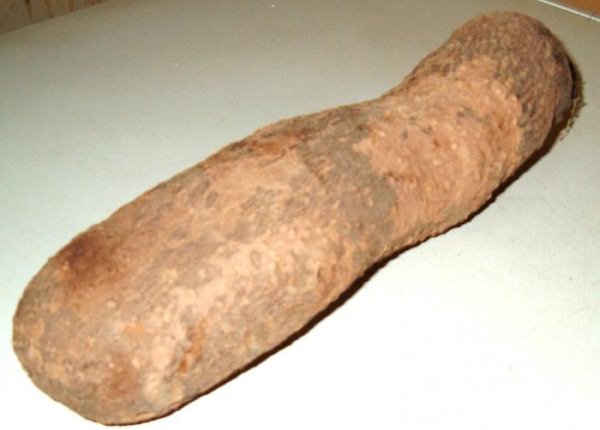
Appearance
Sweet potato is a creeping vine. Its length can reach five meters. Stems root themselves at the nodes. Therefore, usually the plant is no more than 20 cm high. Sweet potato has many varieties. The leaves of some of them are palmate, while others are heart-shaped, like a bindweed. The flowers are light, not formed on all plants.

The fruits are tubers, like potatoes.
Long or round. But they usually grow much larger than potatoes. Some specimens reach a length of 30 cm. The peel is white, pink, light pink or orange, with a barely noticeable roughness. Easily separated from the pulp. Inside the fruit is pale pink, yellow or red (dessert varieties). On the cut of the tuber, a juice similar to milk appears.
The weight of one tuber is from 100 g (undergrown) to 3 kg. At home, it grows up to ten kilograms. And the yield of sweet potato is simply amazing: 50 tons can be harvested per hectare. Yes, even 300 centners of stems for animal feed.
growing conditions
In the tropics, sweet potato is a perennial plant.
In the subtropics and places where the temperature drops below zero, it is cultivated as an annual. Indeed, at the slightest frost, both leaves, and stems, and even tubers die. And when the temperature drops to 10 degrees, its development stops.
Sweet potato is pollinated by bees. But if it does not bloom, it's okay. After all, this is the case that it is not the tops that are important, but the roots.
The growing season is from 180 to 250 days. In this case, it is necessary to take into account both return and first autumn frosts. So consider whether it is possible to grow sweet potato in central Russia.
Beneficial features
How did sweet potato deserve such attention that they seek to grow it thousands of kilometers from their homeland?
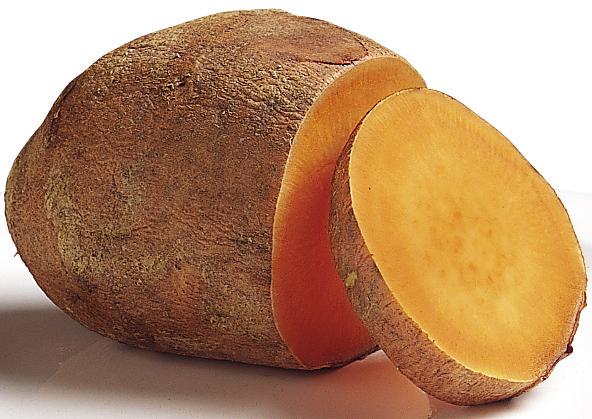
It is one of the few plants in which all parts are edible. In terms of calories, sweet potato exceeds potatoes. A third of the weight is starch. Sweet potato contains glucose, ascorbic acid and various mineral salts, vitamins. Varieties with yellow flesh contain a lot of carotene.
Varieties of sweet potato
It usually tastes like potatoes. Sweet potato can be fodder (almost unsweetened). Vegetable contains a small amount of sugar. Dessert is the sweetest and most delicious. There are varieties with a taste of banana, melon.
Among those grown in our territories are almost unsweetened Potato, vegetable Record and dessert Chestnut.
Sweet potato dishes
It is said that it can be consumed fresh. Young leaves are soaked in salt water to remove bitterness and put into salad. But hardly anyone will do it regularly.
But boiled sweet potato is used to prepare mashed potatoes, put it in borscht and soup. Pancakes are fried from boiled in a peel and peeled (so as not to boil). You can form and cook cheesecakes, manti, cutlets. Very tasty sweet potato - fried slices in sunflower oil. If you eat it with sour cream, you will not distinguish it from cheesecakes. The tubers are baked and dried.
Sweet varieties are used to prepare various sweets.
The seeds are used to make a drink that resembles coffee.
In industrial cultivation, sweet potato can be used to produce flour, alcohol, and sugar.
Distribution zone
Sweet potatoes are traditionally grown in tropical and subtropical regions.
But it can successfully grow and produce crops in more northern regions. It is cultivated in one hundred countries of the world. Sweet potatoes are successfully grown on the territory of Ukraine, the countries of Central Asia, in the south of Russia, as well as in the Caucasus.
How to grow sweet potato in central Russia?
In order to enjoy the fruits of sweet potato to the full, gardeners grow it under a film. Even if it costs a lot of work.
Growing sweet potatoes in the middle lane is possible already because the soil there is quite suitable. He loves light and loose soil. Well, if it is sandy loam and loam. Acidic soil is first limed.
For development, the best temperature is from 25 to 30 degrees. But even when it drops to 20, sweet potato develops normally.
Growing in the middle lane is possible in areas where there is a lot of sun, closed from the wind by trees or buildings. It grows in the shade, but there will be no harvest.
The predecessors of sweet potato are pumpkin, onions and tomatoes.
Site preparation
The peculiarity of growing sweet potatoes is that when the soil is dug deep, the roots become too long and thin, the root crops go deep into the ground and do not grow large. For this reason, the land for growing sweet potatoes in the middle lane is dug up to a depth of no more than 20 cm. It is advisable to do this in the fall. Then they add two kilograms of humus or twice as much compost (per square meter). Add mineral fertilizers containing phosphorus. In the spring, the soil is loosened, after having scattered a nitrogen-containing fertilizer.
reproduction
Sweet potato breeds very interestingly. Growing in the middle lane does not come from seeds. After all, this is a long process that requires at least two years to obtain a normal harvest.
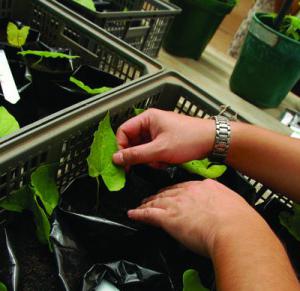
Can be planted like potatoes by burying the tubers in the ground. But then it will begin to grow late and by the beginning of cold weather it will not have time to produce a crop. And this bush will have too many stems. There is a very interesting and at the same time simple way of reproduction. In early March, sweet potato tubers are placed in sand or light soil. They can be cut beforehand, the place of the cut can be disinfected. Periodically moisturize, but do not flood. The temperature in the room should be 18-25 degrees. The shoots with four nodes, which have reached 10-12 cm, are carefully torn off and placed in a jar or other convenient container with water. There they take root.
It is even easier to propagate sweet potatoes by placing them vertically in a glass of water. So it takes up less space. You can dive sprouts into plastic cups or a greenhouse. In the first days, or even weeks, of June, sprouts are planted in a permanent place.
From one sweet potato tuber, you can pluck from three dozen to a hundred shoots. What if you only have one branch? Be content with one bush? Leave it to breed and never know what sweet potato tastes like?
Growing in the middle lane can be done by cuttings. When your shoot begins to grow and gives long enough shoots, they are cut off and divided into parts with 4 knots. Large leaves are cut or part removed to reduce moisture loss. You can hold it in water for several days and plant it out, moistening the ground around it well. It can be propagated by layering, sprinkling the stem in several places with earth.
Landing and care
Rooted shoots are buried in the ground by 6 cm.
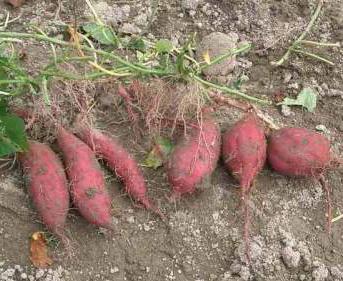
Rows are placed at a distance of 70 cm. Can be planted in a square-nested way. If your variety is medium-sized, then a distance of 30 cm between plants is enough.
Special watering is not required. It is necessary to ensure that the soil under the bushes does not dry out. Otherwise, the plant will begin to feed itself with supplies from tubers. But it does not tolerate stagnant water.
Stems and leaves of sweet potato cover the ground around with a dense carpet. Therefore, the soil under them does not dry out very much. Watering is stopped a couple of weeks before harvest.
Feeding is carried out no more than once a month.

If the stems are placed on supports, the soil around the plant is regularly loosened. This prevents the formation of a dense crust that does not allow air to pass through, destroys weeds that can drown out the sweet potato.
Growing in the middle lane is simplified because there are no sweet potato pests here. Only sometimes cases of fungal infection are recorded. Therefore, with an increase in humidity (frequent rains and high temperatures), sweet potato can be treated with antifungal drugs ("Fitoverm").
Storage
Growing sweet potatoes in central Russia is difficult because it is difficult to keep the crop for a long time. Tubers are well preserved in cellars and cellars. But at high humidity and low temperatures they can rot. The optimum storage temperature is from 13 to 15 degrees, humidity - up to 90%. If your cellar is very damp, then do not store planting material in it. It is better to bring it into the house and put it in the coolest place. And tubers intended for food, use in the first half of winter.
fb.ru
How to cook sweet potato sweet potato?
Exotic fruits are gradually filling the store shelves, so everyone has already met many of them. But there are also not quite ordinary and unknown vegetables, for example, sweet potato.
What is this vegetable?
Sweet potatoes are sweet potatoes. Such a plant belongs to the root crops of the Ipomoea species and the Bindweed family. In general, this is a rather long grassy vine that has roots in the nodes. Sweet potato roots thicken in some places and form tubers, which are eaten. The flesh of these tubers can be orange, yellow, white, cream and even pink, red and purple. The weight of one tuber can vary from 200-300 grams to 2-3 kilograms.
The plant is native to Colombia and Peru. From there it gradually spread to Polynesia, Spain, New Zealand, the Philippines and other countries. Today sweet potato is found only in cultivated form and is grown in subtropical and tropical latitudes, as it loves warmth. In regions with a temperate climate, the plant is also grown, but in an annual form. In addition, the yields are not too large.
There are different varieties of sweet potato, there are about 100 of them in total, although they do not have names, because there is no official classification. But still, all varieties are conventionally divided into vegetable, fodder and dessert, depending on the taste and degree of sweetness. Also, different varieties differ in the shape and color of the pulp and peel. Sweet potato can be round, long, oval. The color of the skin varies from white to yellow and even orange.
The taste of such a vegetable is similar to the taste of a regular potato, but is sweeter and can taste like banana, chestnut, nuts, melon, zucchini or pumpkin.
Composition
The sweet potato contains carbohydrates (there are much more of them than in ordinary potatoes), proteins, starch, ash, water, carotene, various organic acids, potassium, iron, magnesium, calcium, phosphorus, pyridoxine, folic acid, choline, PP vitamins, C, A, B6, B2, B1 and many other useful substances. And the calorie content of sweet potato is only 60-65 calories per 100 grams, so this vegetable can be safely called a dietary one.
Is sweet potato good?
Useful properties of sweet potato:
- Due to the high content of vitamin C, sweet potato can be called an excellent means of preventing atherosclerosis (this vitamin strengthens the walls of blood vessels). In addition, this vegetable helps to strengthen the immune system and increase the body's resistance to infections.
- The substances included in the composition protect the tissues of the body from the destructive and extremely dangerous effects of free radicals, which trigger the aging process of cells, and can also provoke the development of cancer.
- The benefits of this vegetable for the digestive tract are invaluable. The fiber included in the composition normalizes the digestion process, and also removes toxins from the intestines.
- Magnesium is necessary for the normal functioning of the nervous system, so regular consumption of sweet potatoes will help prevent the negative effects of stress.
- The vegetable contains potassium, which strengthens the heart muscle and normalizes the functioning of the cardiovascular system.
- Sweet potato improves appetite and has a beneficial effect on the mucous membranes of the gastrointestinal tract.
- Sweet potato contains substances similar to female hormones, so this vegetable is recommended for women during menopause, as well as for hormonal disorders.
- The vegetable contains calcium, which is necessary for strong bones, teeth, nails and hair.
Contraindications
Contraindications include some diseases of the digestive system, such as gastritis and ulcers. The fact is that sweet potato can irritate the mucous walls of the stomach. In addition, care should be taken during lactation, as well as during pregnancy. Individual intolerance is possible, but it is rare.
How to grow?
As already mentioned above, the cultivation of sweet potato can also be carried out in temperate latitudes, but only in the form of an annual plant. Also, don't expect big harvests. Tubers, as in the cultivation of ordinary potatoes, are not used, they almost do not give viable seedlings.
The cutting method is used. For the preparation of cuttings, either germinated shoots of tubers or parts of the stems of adult plants are used. The optimum temperature for growing is 18-27 degrees. Lower temperatures are detrimental. Regular watering is required (it is especially important during the period of rooting of cuttings), as well as cutting shoots. The period from planting to harvest can vary between 90-150 days and will depend on growing conditions.
How to use?
How to cook sweet potato? This vegetable can be safely called universal, as it is added to fruit and vegetable salads, desserts and other dishes, used as a side dish. This vegetable can be eaten raw, baked, boiled, fried, steamed. We offer several food options.
brjunetka.ru
Sweet potato spread
what sweet potato looks like (photo)
The plant is native to Colombia and Peru. Currently, it is known exclusively as a cultivated plant, which is grown mainly in the subtropical and tropical regions of the Earth. But it can also be cultivated in the temperate zone in warm areas. Most areas of Ukraine and Central Asia are suitable for its cultivation, and in the Russian Federation the most suitable are the North Caucasus, the regions of the Lower Volga and the Don. Amateur gardeners in central Russia keep sweet potatoes under film shelters.
The main producers of this crop are such countries as China, Uganda, Indonesia, Nigeria, Vietnam, India, Japan, Burundi, Tanzania, Kenya.
plant description
sweet potato is a vine-like plant
Sweet potato is a herbaceous vine, in which long creeping stalks-loops (reach 5 m) take root at the nodes, therefore, in practice, bushes usually do not exceed 20 cm. , but are slightly smaller and have a pink, pale lilac or white color. Many varieties of sweet potato do not bloom.
The plant has tubers up to 30 cm long, the flesh of which is juicy, red or pink in color and covered with a thin skin. The average weight of tubers is 0.2-3.0 kg, and in tropical countries it reaches 10 kg. Both on the cut of the stem and on the break of the tuber, milky juice appears, but on the stem it is more bitter. The peel is separated from the pulp with one finger pressure.
This plant is cultivated as a perennial and as an annual, depending on the area. Plant development is disrupted already at temperatures below 9 ° C, and small frosts are detrimental to tubers. The growing season of this crop is from 180 to 250 days.
Like any other, the sweet potato plant has benefits and harms at the same time. Sweet potatoes should not be eaten with peptic ulcers, as they irritate the lining of the digestive system. Pregnant women and nursing mothers should also avoid this product.
Beneficial features
eating sweet potatoes increases libido
When cultivating sweet potato, it showed its useful properties as a fodder and food crop. It should be noted that sweet potato has a calorie content 1.5 times higher than ordinary potatoes, which determines its high nutritional value. Mature tubers contain 25-30% of the total weight of starch, 3-9% of glucose, the rest is mineral salts, carotene, ascorbic acid, vitamins B6 and A. Varieties with yellow flesh are especially rich in carotene.
Sweet potatoes are superior to potatoes in terms of calcium, fiber, and iron. It is especially recommended for those people who cannot tolerate the fiber of such familiar vegetables as carrots, beets, etc.
The popularity of this potato is partly due to its unique property, as the ability to increase libido. This was recorded in Thomas Muffet's medical treatise "On Improving Health" in 1595.
Although sweet potatoes are high in glucose, they are good for diabetics because they help stabilize blood sugar levels.
It is believed that this plant contains natural female hormones (including progesterone), so sweet potato preparations and the plant itself are a valuable product for women of the menopausal age category.
Taste Features
sweet potato similar in taste to potatoes, but more sweet
Sweet potatoes are eaten both separately and as an additive to cereals and vegetable side dishes. It is quite tasty and directly fresh, but most often it is used to prepare second courses (the same as from potatoes). They even make stuffing for pancakes from it. But there is one feature: when cooking, the peeled tubers are completely boiled to the consistency of mucus, so they try to fry or boil them unpeeled.
The taste of sweet potatoes is similar to the taste of frozen potatoes (slightly sweet), which is why they began to call it "sweet potatoes". Some sweet varieties, which are specially bred, taste like various fruits and vegetables (bananas, pumpkins, chestnuts, melons, etc.). From such sweet varieties, they prefer to prepare marshmallows, jams and various confectionery products. By processing tubers, sugar, flour, alcohol and molasses are obtained.
The mealy-sweet taste of the tubers of this plant goes well with sour foods: orange zest, lemon juice, spicy seasonings (curry and pepper).
Young stems and leaves can be added to salads, but only after thorough soaking in salted water or boiling to remove bitterness. From flowering varieties, seeds are used as a coffee surrogate. Absolutely all parts of this crop can be fed to livestock.
plant varieties
There are vegetable, fodder and dessert varieties of sweet potato. Depending on the variety of sweet potato, its tubers can be spindle-shaped or spherical, and in color - pink, white, orange or pale yellow. The pulp of vegetable varieties, as a rule, is lighter, and dessert varieties can be pink or red.
On the territory of Russia, the following varieties are most common: "Chestnut" (sweet), "Potato" (savory) and "Record" (semi-sweet). All these varieties are considered fodder.
Application in folk medicine and cooking
sweet potato is used as an exquisite side dish in "high" cuisine
For medicine, the most interesting is the high content of starch in sweet potatoes. This plant is widely used to treat various diseases of the gastrointestinal tract, as an enveloping and emollient. It is used both as a tonic and as a vitamin remedy.
Ugandans like to drink tea in the morning with dried sweet potatoes. Whole baked sweet potatoes are popular in Japan and China, and in winter, the Chinese warm up with sweet potato soup with ginger. Koreans make transparent noodles out of it. Many Japanese sweets contain sweet potatoes due to their high starch content.
Sweet potato is widely used in cooking.
- Stuffed sweet potatoes. They take four tubers of the same size (together they should weigh about 1 kg.), Wash them well, prick them several times with a fork, brush them with olive oil (a small amount) and put them in the oven on the wire rack. Cut off the “lid” from each sweet potato and carefully remove the pulp from the middle. Add 150 gr. sour cream, grated lemon zest and juice of 1/2 lemon, mixed with 1 tbsp. l. grains of canned green pepper, salt, mix and spread this puree in prepared tubers. Place a small piece of butter on top of each.
- Chips. Wash two thin long tubers, boil for a couple (15-20 minutes). 3 art. l. flour mixed with 5 tbsp. l. water and leave for 30 minutes. Beat two small eggs with cayenne pepper and salt, add them to the dough. Prepare sweet potatoes, peel them and cut into thin slices (0.5 cm), season with cayenne pepper or curry powder to taste. Take each slice with a fork and dip into the dough. In 1 l. of heated vegetable oil, fry the slices in small portions until golden brown. Cooked chips are kept in a slightly preheated oven until the end of frying all the slices.
- Sweet potato soufflé. Peel the sweet potato and chop finely. Melt margarine or butter in a pan until soft. Pass hot sweet potatoes through a sieve, or chop. The prepared mass is mixed with grated cheese. Separately beat the proteins and yolks, add them to the previously obtained mass. Everything is carefully mixed and spread on a frying pan greased with oil and lightly sprinkled with breadcrumbs, sprinkled with grated cheese and baked. Usually this dish is prepared in portioned pans, in which they are served at the table.
EshZdorovo.ru
About growing sweet potatoes Diary of a gardener. The Mitlider method in action.
About sweet potato in a nutshell
I will not go into botany - enough has been written about sweet potato. It is a tasty tuberous vegetable, also called "sweet potato", although it is not a potato, and they are not even related. But in terms of culinary qualities, sweet potato is really similar to potatoes. More details below.
Is this the first time you've heard of sweet potato?
Sweet potato is a rare crop for the CIS, and completely undeservedly. What can you do, the heavy legacy of the USSR - then only what was imposed by instructions "from above" was grown. And the leaders of the USSR ... often they could launch a person into space, but fail to collect a banal potato crop. So it happened with the sweet potato. They did not have time to introduce it under the USSR, and then there was no time ... And only now, finally, it gradually appears in some gardens and in the capital's shops. People began to take an interest in him. But in such things, inertia is always strong. There is no sweet potato in cookbooks in Russian, not in most stores around the country. It was not cooked by our mother/grandmother...
It will pass. Potatoes have been introduced in Russia for about a hundred years. People hated potatoes so much that they raised potato riots, which were suppressed by the troops. And today the potato has become familiar and "native". The same will happen with the sweet potato, only faster. Think back, for example, when you first got a cell phone… not so long ago, right?
Varieties
Unlike potatoes, different varieties of sweet potatoes can differ tremendously from each other in all respects! Here is how sweet potatoes are classified:
By color of the pulp: yellow, orange, red, purple or cream By texture: soft and juicy or dry and hard By form: from angular to conical Taste: from bland to very sweet (that even jam can be cooked)
In the US, juicy varieties with orange flesh are popular. In Asia, varieties with creamy or purple dry flesh and a smooth surface are preferred, which are very tasty when baked.
culinary properties
Sweet potatoes are similar to potatoes and vice versa. But “similar” does not mean “almost as good, but not enough”. Please refrain from making "better" or "worse" comparisons when talking about sweet potatoes and potatoes. It's just a different vegetable, and such a comparison of it with a potato is no more appropriate than a comparison of cucumbers with zucchini.
The taste properties of sweet potato are as diverse as, for example, apples. See above About varieties. We have already written about our first culinary impressions of sweet potato.
Baked sweet potato. TASTY!
The variety that we grow is almost "classic". It can be used in many dishes where potatoes are commonly used, and goes just as well with all foods. Therefore, the scope of sweet potato is just as huge. But some dishes work better with potatoes. And some - with sweet potato. Here you have to try - many dishes, when replacing potatoes with sweet potatoes, become unusually tasty, or at least open themselves from the other side.
Is it worth it to grow
Serious culture
Our gardeners love experimenting with different crops. They can plant Jerusalem artichoke (although it is almost not stored), they can eat burdock roots, cook dandelion borscht, etc.
Sweet potato has nothing to do with these "entertainments". This is a serious food crop that is grown all over the world on a huge scale. Most of the world's sweet potatoes are grown in China - 80.5 million tons per year. But China grows less ordinary potatoes - only 72 million (data for 2009). Here is a very interesting video about the process of growing sweet potatoes in Louisiana (USA) (I did the translation myself, please excuse any clumsiness):
Sweet potato in the Russian climate
Sweet potato is not a toy culture. Being a serious competitor to potatoes, it did not spread with us mainly because of its thermophilicity. But breeders do not stand still. Even ordinary tomatoes did not grow in the Non-Black Earth region until the middle of the 20th century. And now they are growing, and in open ground. The sweet potato has also adapted. Modern varieties ripen in 90-110 days. Sweet potato has become an acceptable crop for the northern regions.
July 16 (73 days after landing). Midsummer. The compost heap is already completely covered with sweet potato foliage.
Is your climate close to Moscow, or even warmer? Suitable for sweet potato! Specifically, we normally grew sweet potatoes in the north of Bashkiria. Here they already pay the “northern surcharge”. Here, the average date of the last frost is May 30, the average date of the first frost is September 10. Not the coldest region, but colder than most of the CIS. And nothing, the sweet potato grows. Here are some additional simple tricks for growing sweet potatoes in cold climates.
cultivation
How to get sweet potato
Fortunately, in Russia and the CIS there are already quite a lot of people growing sweet potatoes. And there is always someone from your country who can send you a couple of tubers by mail. For example, residents of Russia can apply for tubers to Alexey Pavlovich Kochetkov, and in Ukraine - to Alexander Yuryevich Vorobyov.
Alas, you will not be able to order sweet potatoes by mail from another country - customs does not allow parcels with plants to pass without a special phytosanitary certificate.
It is better to take a variety that can definitely grow in your climate. Sometimes imported sweet potatoes are sold in stores, but they can be a variety with a long ripening period. In addition, store-bought sweet potatoes can be treated with substances that inhibit germination.
IMPORTANT! Sweet potato tubers do not tolerate temperatures below + 10 ° C, so they must be ordered by mail in the warm season. And take this into account when storing and harvesting. But the cuttings, on the contrary, are tenacious. Therefore, in the USA, sweet potato seedlings are usually sent with rooted cuttings - this allows you to start mailing in early spring.
Planning
Of course, first decide how much you want to plant sweet potatoes. We have tried planting sweet potatoes using the Mittlider method, in narrow beds in two rows, with plant spacings of 35 cm. Many sweet potato growers make the spacing longer, but tight planting is a feature of the Mittlider technology that is offset by better nutrition, lighting, and watering. We let the foliage grow in wide mittlider passages.
About 350 plants are placed on a hundred square meters, divided into narrow ridges of Mitlider. The colder the climate, the greater the distance between sweet potato plants1. Therefore, in the new year we plan to try other planting distances, be sure to describe the results. : Landing results with other distances are already available, they can be seen in this article.
seed
A sweet potato tuber can simply be buried in the ground, like an ordinary potato, but there will be little sense from such a planting. The tuber will give too many shoots, which will further interfere with each other and the yield will decrease. Therefore, sweet potato is usually propagated by cuttings.
During the winter, tubers produce many shoots that can be cut and rooted. And plant the tuber itself for germination - it will give new shoots.
Sweet potato tuber with many sprouts
Usually, from the beginning of the germination of the tuber to the first cuttings suitable for cutting, 4-5 weeks pass. Therefore, it is necessary to germinate the tubers in advance - in order to have time to grow enough material. The length of the cuttings should be 15-25 cm, and they must have internodes in the underground part (in the internodes, the sweet potato releases roots) and a pair of buds in the aboveground - future growth points.
cultivation
General landing pattern
In gardening, we use the standard narrow beds of the Mittlider method, on which we plant sweet potatoes in two rows with a distance of 35 cm between plants. Perhaps, increasing the distances will increase the yield and quality of tubers, we will study this issue later. September 22, 2011 Update: already studied.
In classical agricultural technology4 sweet potatoes are planted in rows with a distance between plants of 20-35cm, and a distance between rows of 0.8-1m.
It is recommended to start planting cuttings when the date of the last frost has passed. More strictly - when the soil warms up to 18°C at a depth of 10 cm4. The sooner you can provide such conditions, the sooner you can start landing. For a sweet potato, this is not superfluous. For example, you can cover the prepared ridge with a film a week before planting the cuttings (more on this will be discussed below).
In 2010, we tried to plant sweet potatoes at different times, and we were convinced of the validity of a number of rules described in the literature4 - if cuttings are planted in cold soil, the tubers will be long and crooked. The warmer the soil was at the beginning of cultivation, the more regular and beautiful the shape of the tubers will be.
Sweet potatoes are fed like ordinary potatoes - 4 top dressings with mixture No. 2, to which you can add a fifth top dressing with wood ash. Sweet potato is very fond of potassium (K), and is very sensitive to sulfur (S) deficiency, so it is better to use a mixture based on sulfate fertilizers in top dressing3.
The variety we grow, Pobeda-100, matures in 90-100 days. In our area, the duration of the growing season is 120 days, and the sweet potato has time to grow and produce a crop. But there are some tricks a gardener can use to get a bigger harvest.
Despite the cold climate
In most of Russia, palm trees, as you know, do not grow, and even quite the contrary. A similar situation has developed in another country - Canada. The local farmers have long been inventing ways to cheat nature. One of them, Ken Allan, wrote the book "Yam for gardeners, with special tricks for northerners", in which he advises yam and many other heat-loving crops (watermelon, basil, pepper, tomatoes) to be planted in ridges, the soil of which is covered with transparent plastic film. It turns out a kind of "greenhouse for the roots", and the aerial part of the plant remains in the open air. According to him, and according to our experience, this is really a great technique.
Basil under film mulch at Ken Allan's site:
Here is a video demonstrating such a landing process:
Ken Allan makes two important points about the use of film2:
- Plastic should tightly close the ridge. The edges of the film must be sprinkled with earth, so that they do not stick out. And after planting the plants, the holes should be covered with soil or sand (Ken prefers sand). He also writes: “The bed should be slightly raised so that the plastic fits well. And let the top of the ridge be flat or slightly concave, with small depressions around each plant to direct the water. In the Mittlider method, this requirement is fulfilled by itself.
- You must use clear (not black) film. This may be contrary to "common sense", because. the fact that black color contributes to heat has taken root in our minds. Therefore, many vegetable growers mistakenly recommend a black film for warming up the soil. In agricultural institutes, control experiments were carried out several times, and in each of them, a transparent film showed better results in warming up the soil than black. Transparent film is better, because. creates a "greenhouse effect" - it passes heat (note: the rays of the Sun) and retains it under itself, acting very effectively. A black film, on the contrary, does not transmit rays, poorly conducting heat. As a result, the black film, although it heats up itself, transfers only a small percentage of this heat to the soil. (Remember that the transparency film recommendation applies to vegetable production. in cold climates)
Film mulch allows you to save moisture, warms, protects from temperature changes, makes the substances contained in the soil more accessible - all this creates comfortable conditions for the development of sweet potato roots. It is the roots of the sweet potato that are the most sensitive to cold. And the green tops are hardy, and endure even short-term frosts. Warming up the soil with the help of a film allows you to start planting sweet potatoes at the same time as potatoes - in early / mid-May (in our area), and collect a larger and higher-quality crop (in terms of the shape and size of tubers).
Update: we have translated an interesting article by Ken Allan, in which he talks in more detail about his tricks of growing sweet potatoes in Canada.
In general, film soil mulch is a very popular method. Here, for example, is a similar video about planting sweet potatoes from Japan:
nutritional deficiencies
Our soil may not be perfect, and every plant can tell us that. Some signs of nutritional problems are the same for all plants, some are unique.


